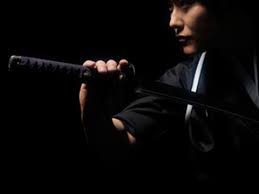イメージ以上の未来:新しいゴールを目指して
前回のブログでは、「ありありとイメージできることは実現可能だけれど、コーチングではそのイメージを超えたゴールを設定しなさい」という一見矛盾する考え方について説明しました。
今回は、この矛盾をどのように解消するかについて解説します。
コーチングにおけるゴール設定は、現状を超えたゴールである必要があります。現状とは「ステータス・クオ(status quo)」、つまり今の状況をそのまま維持することを指します。
何も変えず、今のままの状態を続けることが「ステータス・クオ」です。たとえば、毎日同じように考え、行動し続けることがこれに当たります。
この「ステータス・クオ」を超えたゴールを設定することにこそ、コーチングの醍醐味があります。
これにより、あなたを取り巻く環境や関係性が変わり、思考や行動パターンも変わり始めます。さらに、今まで気づかなかったものが認識されるようになるのです。
たとえば、あなたが現状は看護師でありながら、「世界の戦争と紛争を止めるために国連事務総長になり、ニューヨークに移住する」というゴールを設定したとします。
国連事務総長の毎日やニューヨークについては詳しくなくても、そのゴールに向かって進む自分の姿を思い描くことはできます。
少なくとも、国連についての知識や英語を話せる自分をイメージすることは可能です。
このイメージを強く持つことで、無意識に国連についてインターネットや書籍で調べ始めたり、テレビの視聴番組をバラエティーからBSドキュメンタリーに変えたりするでしょう。また、どうすれば英語が上達するかについても調べ始めるかもしれません。
英語に関しては、今や東京都市部にいけばインバウンドのために英語が公用語みたいにな状況です。
そこに行って、英語が当たり前に話されている環境で雰囲気を感じ取り、あなたもそこに交じって会話している姿をイメージすれば良いでしょう。テンプル大学などの英語圏の大学で、社会人枠の授業をとってもいいでしょう。
さて、重要なのは、繰り返しますがイメージを強くもつこと。これは、ゴールに向かっているという臨場感が、現状の「ステータス・クオ」による臨場感を上回ることを意味します。
仮に、ニューヨークには行ったことがなくても、ネットで国連本部周辺の地理を調べ、画像や映像を目にすることができます。
これに、東京の都心を歩いたときの思い出を組み合わせることで、未来の記憶を作ることができるのです。さらに、東京の国連大学を訪れることで、ゴールに向かう臨場感を強化することもできます。

このように、ゴールの臨場感がまだ薄くても、意図的にゴールに向かっている「今」の臨場感を強めることが可能です。
これが、「ありありとイメージできることは実現可能だけれど、コーチングではイメージを超えたゴールを設定しなさい」という矛盾を解消する方法です。
次回はより臨場感を高める方法について書きます。
In the previous blog, I explained the seemingly contradictory idea that “things you can clearly imagine are achievable, but in coaching, you should set goals beyond that image.”
This time, I’ll explain how to resolve this contradiction.
In coaching, goal setting needs to go beyond the current situation. The current situation, or “status quo,” means maintaining things as they are now.
Maintaining the same state without changing anything is the “status quo.” For example, thinking and acting the same way every day fits this description.
The real essence of coaching is to set goals that go beyond this “status quo.”
By doing so, your environment and relationships will change, and your thinking and behaviour patterns will start to shift. You will also begin to notice things you haven’t seen before.
For instance, let’s say you are currently a nurse, but you set a goal to “become the UN Secretary-General to stop global wars and conflicts and move to New York.”
Even if you don’t know much about the UN Secretary-General’s daily life or New York, you can imagine yourself moving toward that goal.
At the very least, you can picture yourself as having knowledge about the UN and speaking English.
By holding this image strongly, you might start researching the UN online or in books, change your TV viewing from variety shows to BS documentaries, or look into how to improve your English.
In Tokyo’s urban areas, English is almost an official language due to inbound tourism.
You can go there, experience the environment where English is commonly spoken, and imagine yourself participating in conversations. You might also consider taking courses at English-speaking universities like Temple University.
What’s important, again, is to hold the image strongly. This means that the sense of presence in moving toward your goal should surpass the sense of presence from the current “status quo.”
Even if you’ve never been to New York, you can look up the geography around the UN headquarters online and see images and videos.
Combining this with your memories of walking in Tokyo can help create a memory of the future. Visiting the UN University in Tokyo can also enhance the sense of presence toward your goal.
In this way, even if the sense of presence for the goal is still weak, you can intentionally strengthen the sense of presence in the “now” as you move toward the goal.
This is how you resolve the contradiction of “things you can clearly imagine are achievable, but in coaching, you should set goals beyond that image.”
Next time, I will write about ways to enhance the sense of presence.
コメントを書くにはログインが必要です











コメントを残す
コメントを投稿するにはログインしてください。